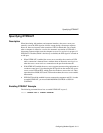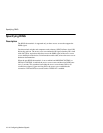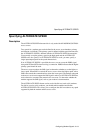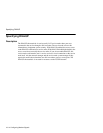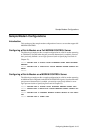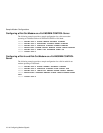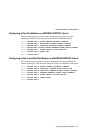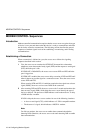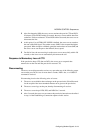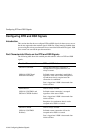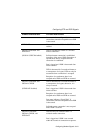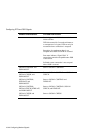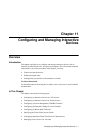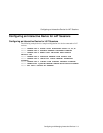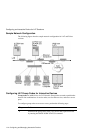
Configuring Modem Signals 10-19
MODEM CONTROL Sequences
3
After first detecting DSR, the access server monitors the port for CTS and DCD.
If it detects CTS and DCD within 30 seconds, the access server enables data flow
on the line. If it does not detect CTS and DCD within 30 seconds, the access server
disconnects the line.
4
At this point, if an ALTERNATE SPEED is defined, the access server examines
the state of the SMI signal. The modem asserts SMI if it has accepted the higher
port speed. When it requires a fallback speed, the modem does not assert SMI, and
the access server sets the port to the fallback (lower) speed.
5
For dial-in lines, the user must log in to the access server successfully within 120
seconds, or the access server automatically disconnects the call.
Response to Momentary Loss of CTS
If the port device drops CTS (but not DCD), the access server suspends data
transmission on the line until the port device reasserts CTS.
Disconnecting
The access server disconnects the sessions on a port when any of the following events
occur on the port: DCD is lost for more than 2 seconds, DSR is lost, or a LOGOUT
command is received.
Disconnecting involves the following series of events:
1
The access server disables data exchanges on the port and waits 300 milliseconds
for the stop bit of the last transmitted character to be given to the port device.
2
The access server logs out the port, thereby disconnecting all sessions.
3
The access server drops DTR, RTS, and DSRS for 5 seconds.
4
After 5 seconds, the access server resumes the port device interaction as described
in step 1 of the Establishing a Connection sequence in this section.



